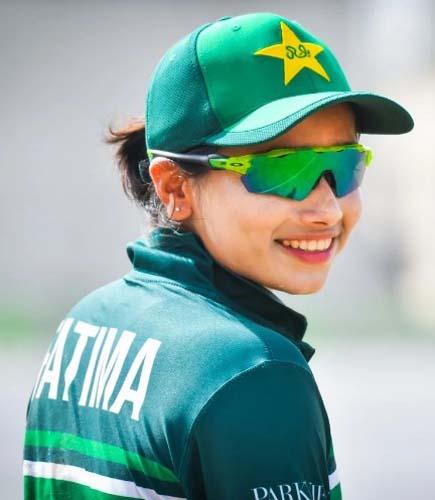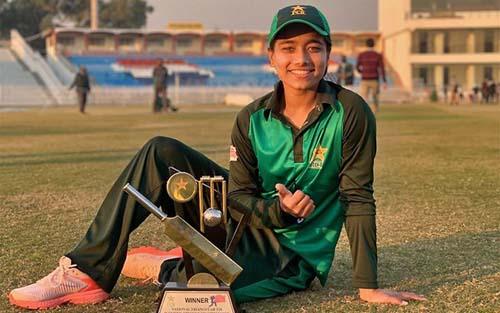
‘There are girls all over Pakistan who want to play cricket but they need opportunity’ – Fatima Sana
“If you are a Pakistan [contracted] player, then you have everything. But if you are not a Pakistan player, you don’t have as much. You only have normal things like school cricket, college cricket and that’s it.”
That’s how Fatima Sana described the disparity between the professional and the aspiring in Pakistan’s women cricket, which is only set to get bigger as the women’s game enters the big-money franchise era.
On Monday, the WPL auction will be held in Mumbai, with the expectation that it will change the women’s game financially and perceptively. And Pakistan will have their noses pressed against the windows when 105 players at this T20 World Cup go under the hammer, none of them in their squad.
Tensions between India and Pakistan mean that, just like the IPL, no Pakistan players will be part of the WPL. If that isn’t enough of a cold shoulder, the Women’s PSL which was due to be played in March, has been postponed to September thus delaying Pakistan’s own opportunity to enjoy a local franchise tournament. The FICA women’s global employment report, released earlier this week, labelled Pakistan women’s cricket “fledgling professional,” with “limited coverage and funding,” and said “fundamental changes are required to create a recognised pathway for female cricketers in Pakistan to make a viable living out of playing professional cricket.”
Those changes are actually happening in fast-forward in India, where the WPL is confirmed as the wealthiest women’s league around, and may be worth more than even some men’s leagues. That may not be such a big deal to Pakistan if they could simply ignore the whole thing, but they won’t be able to. Their first opposition in the tournament is India, who they take on 24 hours before the auction, and who will know the Pakistan match is their last opportunity to impress for a big pay cheque.

Given all that and Pakistan’s poor World Cup record – they have won only a quarter of their 28 matches and never made it out of the first round – are they feeling a little undone? Not according to Sana. “We’ve prepared ourselves best because we played against the best side, Australia, before the World Cup so that will help us,” she said.
Pakistan played three ODIs and two T20Is in Australia [the third T20I was rained out] and lost all of them by big margins in the build-up to this World Cup but the results did not concern Sana. “When you play against the best team, you will learn a lot of things. It’s a great chance for us to become a top four team.”
For Sana, the learning came from meeting her hero, Ellyse Perry, who she has idolised since childhood and played against once before, but was too nervous to approach. “When I was 11, I first saw Perry and I saw her bowling the last over in a match against England or New Zealand and I thought I will follow her and look up everything to do with her. After that, she became the best allrounder in the world, so that motivated me,” Sana said. “At the last World Cup, I saw her only, I didn’t say anything. Now when I was against Australia, I asked a lot of things about cricket.”
The knowledge-exchange wasn’t what Sana enjoyed most about meeting Perry. “The best thing is that I was bowling and she was batting and that was everything for me. I was trying to get her out and next time I will do it.”
If the next time comes at this World Cup, it will have to be in the semi-finals at the earliest, since Pakistan and Australia are in different groups. As much as the romantics among us would like this scenario to play out, the realists will caution against imagining it and secretly maybe Sana would say the same. When asked about whether she was concerned about the growing gap between cricket’s haves and have nots, she conceded that “they have a good structure in Australia where they support Under-19, Under-16 and Under-15 teams. In Pakistan, the structure is not as good as Australia’s.”
What Pakistan lacks in their structures, they make up for in talent and Sana is one example of that. She began playing cricket in the street with her brothers, who encouraged her to develop her bowling. She was also able to play a range of other sports and competed in the national athletics championships at Under-19 level. She explained that she only really had that opportunity because she grew up in a city, where access is easier than some of Pakistan’s smaller towns or more rural areas. “In Karachi and Lahore, we have lots of girls playing cricket but we need places like Multan and other places [to also develop players]. There are girls who want to play cricket in those areas but they need an opportunity.”
That’s a well-worn trope, especially in women’s cricket, but as the WPL auction looms large over this week, it remains as true as ever.
